.
Canon RF 100-400 5.6-8.0 IS USM
Compact Telezoom for RF Mount Cameras
Peter
Kun Frary
.
.
The RF 100-400 5.6-8.0 IS USM is a petite and ultra lightweight telezoom aimed at hobbyists and light packers. It covers a 4X zoom range of medium to moderately long telephoto making it ideal for hiking and travel.
God Beams | EOS R6 MK II and RF 100-400 5.6-8.0 IS USM
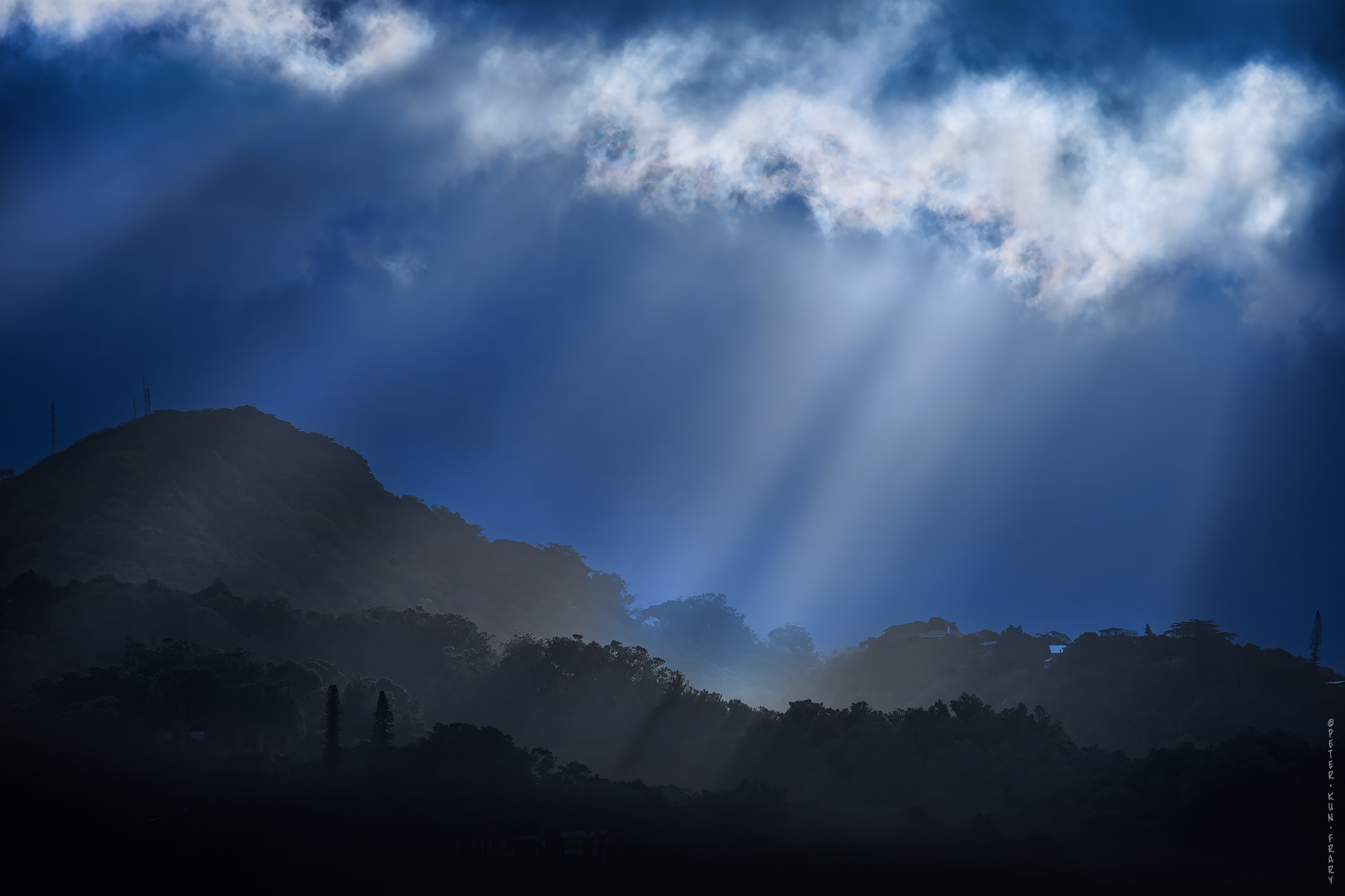
This review consists of my opinions and observations as a hobbyist. No scientific measurements, MFT charts or pixel peeking comparisons will be found here.
 Compatibility Compatibility
The RF 100-400 5.6-8.0 IS USM lens works on all Canon EOS R series cameras, both full frame and APS-C, e.g., EOS R, R6 MK II and R7. It will not fit Canon M series cameras, Canon film SLRs and Canon DSLRs.
Canon RF 100-400 5.6-8.0 IS USM | Photo courtesy Canon Inc.
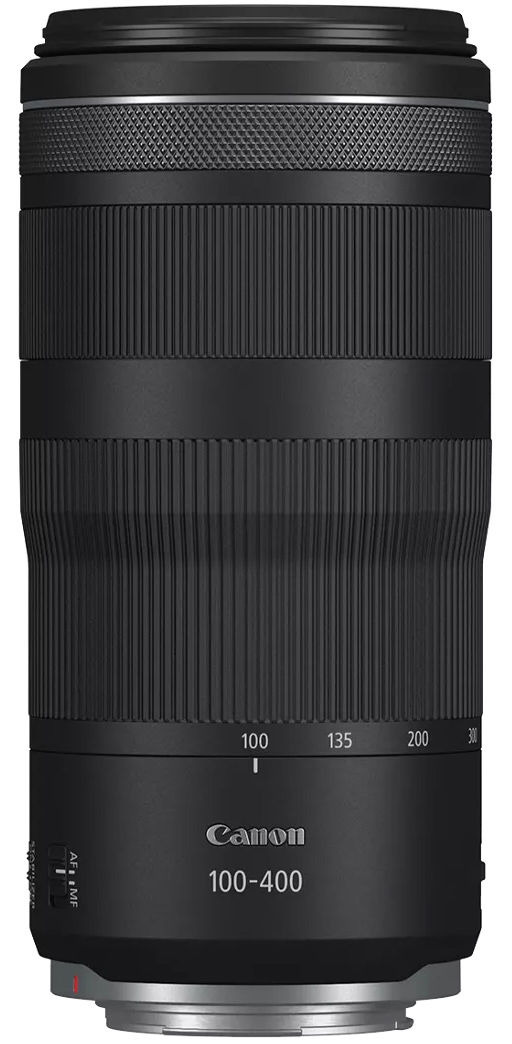
 Construction Construction
Build is light duty and, at a slender 6.48 in. x 3.13 in. (164.7 x 79.5mm), similar in size to a DSLR era 75-300 kit telezoom. The spartan appearance is strangely reminiscent of a goth travel mug. However, fit and finish are decent: tough engineering plastics, sturdy switches, smooth turning rings and metal lens mount. A nested barrel moves during zoom operation, but does not rotate.
The large ribbed zoom and focus rings are grippy and conveniently placed. However, the control ring, programmable for a variety of functions such as  ISO, ISO,  flash exposure compensation, flash exposure compensation,  white balance, etc., is on the far end of the barrel. An arm shift is required to reach it, wasting a precious second in the heat of a shoot. Placement near the lens mount would be a better design. white balance, etc., is on the far end of the barrel. An arm shift is required to reach it, wasting a precious second in the heat of a shoot. Placement near the lens mount would be a better design.
This lens uses 67mm filters, a size common to many Canon lenses.
Fritillary Butterfly | EOS R6 MK II and RF 100-400 5.6-8.0 IS USM

 Image
Quality Image
Quality
Wide open at all focal lengths, the RF 100-400 5.6-8.0 IS USM exhibits good contrast, low chromatic aberration and is sharp across the frame. Corners are slightly softer than the mid-frame, but extreme corner performance is still surprisingly good—good enough for the detailed landscapes I shoot. Closing down a stop adds slight improvement. Optically, it compares well to the sharpness and contrast of my EF 70-300 4-5.6L IS USM, a twice as expensive L series lens (almost twice as heavy too). Unlike the L sibling, it doesn't have weather seals, distance limiter, extra beefy build or an additional stop of light.
I also own the EF 70-300mm f/4-5.6 IS USM II (the one with the LCD) and found the RF 100-400 5.6-8.0 IS USM slightly sharper, especially along the periphery, but exhibiting more light falloff if left uncorrected.
Gerbera Daisy | EOS R6 MK II and RF 100-400 5.6-8.0 IS USM

Flare
Point the RF 100-400 5.6-8.0 IS USM at a blazing sunset and flare and ghosting are well controlled. The Super Spectra Coating (SSC) brings home the bacon!
Lens Profile
The RF 100-400 5.6-8.0 IS USM, like other RF lenses, is a computational design. In other words, corrections for light falloff and distortion are applied in-camera for JPEGs or in editing software—e.g., DPP4 or Lightroom—via a lens profile. With that said, corrections are relatively mild and less than those required for my RF 14-35 4L IS USM. Disabling the lens profile in Lightroom results in usable images albeit the corrected images are better.
Bishop Place | EOS R6 MK II and RF 100-400 5.6-8.0 IS USM

 Auto Focus Auto Focus
A rear element focusing group is driven by a Nano USM and is shockingly fast for a moderately priced lens. The front element doesn't rotate or extend during focusing, allowing easy use of polarizing filters.
 Quasi-Macro Quasi-Macro
One of the things I love about this lens is the close focus ability. At 400mm, it focuses as near as 3.44 feet (1.05m), allowing .41X magnification—ideal for flowers, butterflies and small creatures. The quasi-macro focus ability keeps this lens on my camera nearly all the time. Because Nano USM is blazing fast, it works well for focus bracketing (focus stacking) on both the R7 and R6 MK II.
Monarch Butterfly | EOS R7 and RF 100-400 5.6-8.0 IS USM

Electronic Full-Time Manual Focus
Focus is fast and reliable on my R7 and R6 MK II. However, in low contrast scenes it sometimes misses focus. The workaround is to use manual focus (MF). The electronic full-time MF feature of this lens allows manual focus without flipping the AF/MF switch. To use this technique, leave the shutter button half-depressed while turning the manual focus ring. Manual focus is via focus-by-wire (no mechanical linkage) and feels smooth and accurate.
To use electronic full-time MF, enable it in your camera's AF menu.
Water Lily | EOS R6 MK II and RF 100-400 5.6-8.0 IS USM

 Servo Focus Servo Focus
AI servo mode is plenty fast enough to keep up with moving vehicles, birds in flight and assorted critters. On an EOS R7 or R6 MK II, I use AI servo to recompose while keeping AF locked on the subject. This lens is compatible with Movie servo, and is silky smooth, responsive and effective for pulls. In typical outdoor shooting environments, AF and IS are silent to camera mics. However, if you are serious about audio quality, you'll need to use an external mic and/or audio recorder.
Fritillary Butterfly | EOS R6 MK II and RF 100-400 5.6-8.0 IS USM

 Zoom Zoom
The zoom ring is large, covered with ribbed rubber, damped, smooth turning and doesn't creep. A nested barrel extends about 3 inches (76mm) when racked out to 400mm. A lock switch to prevent zoom slippage while walking is provided, but only works in the 100mm position.
This is not a parfocal lens. Parfocal designs are getting less common so realize if you focus at 100mm and zoom to 400, you'll need to refocus. There is an easy workaround: keep the shutter button half-depressed while zooming and the camera will follow and maintain focus perfectly.
Tantalus with Rain Mist | EOS R and RF 100-400 5.6-8.0 IS USM
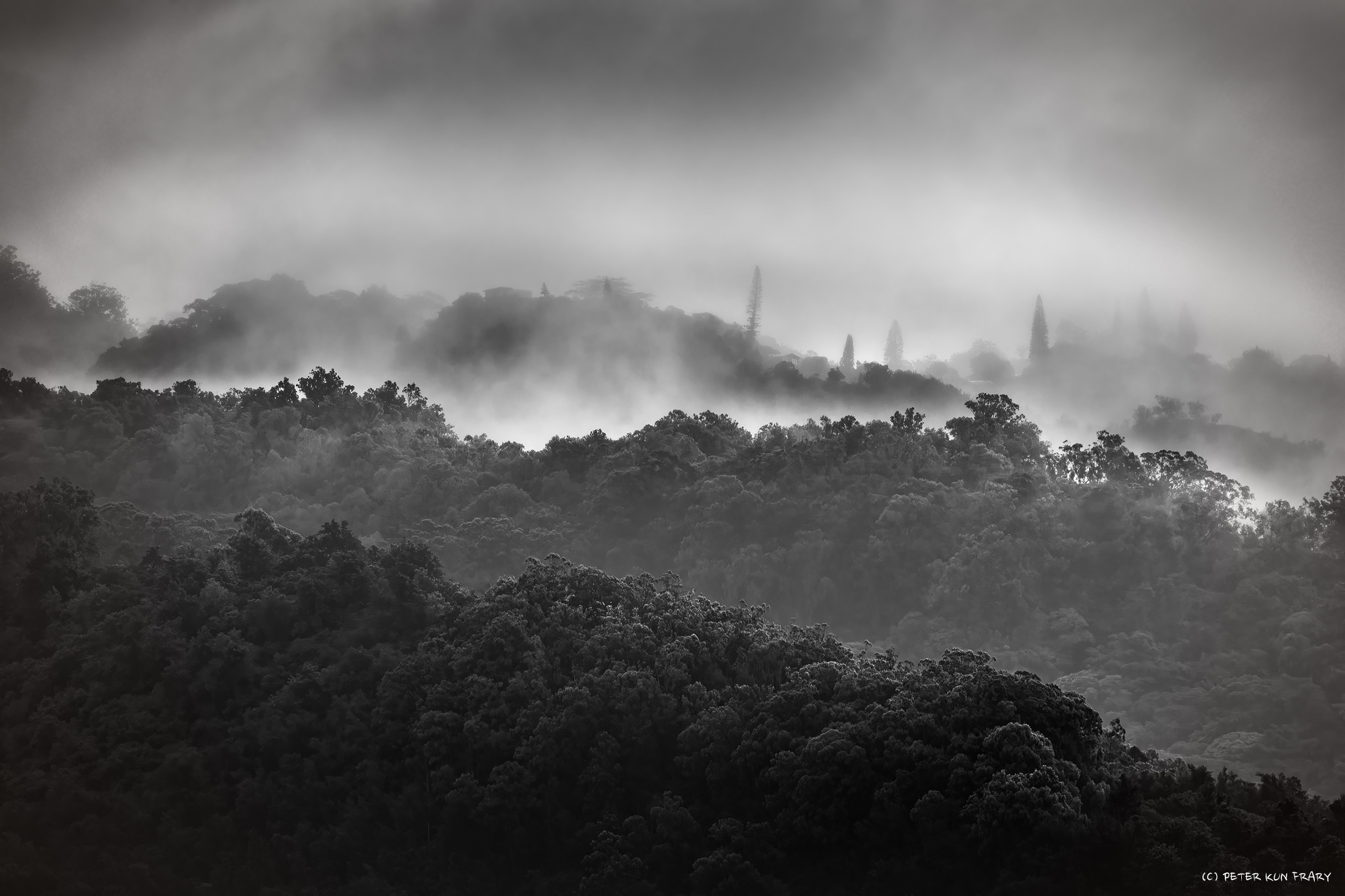
 Image Stabilizer Image Stabilizer
The RF 100-400 5.6-8.0 IS USM is equipped with an image stabilizer (IS). Canon rates it at 5.5 stops of stabilization, 6 stops with IBIS (in-body image stabilizer). Because this lens is so light, I find it more challenging to hold steady than heavier lenses. Nevertheless, the IS feature insures I usually get a sharp picture 4 or 5 stops below my normal hand held shutter speed, allowing sharp images in low light without tripod, flash or insanely high ISO. However, the rated 6 stops (1/8 sec at 400mm) rarely works for me unless I brace against something.
Stabilization Modes
The image stabilizer switch is on the barrel near the lens mount and has two positions: on and off. No user set panning or other modes. However, this lens senses static subjects and panning, automatically optimizing stabilization according to the situation. For landscapes, macro and panning, stabilization worked well for me. |
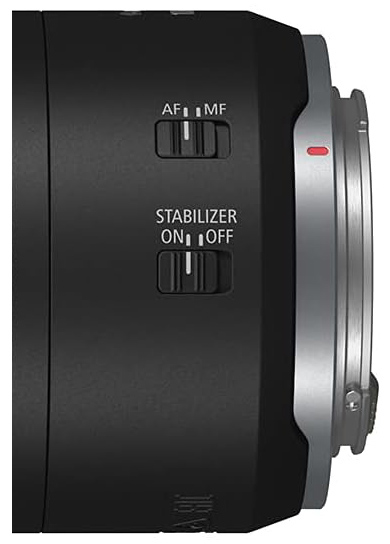 |
 Video Stabilization Video Stabilization
With my R7 and R6 MK II, IS and IBIS work together to deliver a gimbal like smoothness to hand held video. While IBIS only adds a half stop to Canon's stabilization specification for still photos, IBIS working in tandem with IS adds significantly to video stabilization, smoothing out little jerks and twitches typical of hand held video. When I tested the RF 100-400 5.6-8.0 IS USM on my EOS R, a camera lacking IBIS, the gimbal like smoothness was absent.
Shake, Rattle 'n Roll 
For those prone to shaking their new RF 100-400 5.6-8.0 IS USM, know that the soft rattle you hear is the IS lens element. Electromagnets control movement of the element that counters shake. Even if you disable IS, the IS motor remains active to hold the element stationary. When dismounted, the lens loses power and the IS element is loose. Indeed, you can see it move if you peer through the front element. This lens is not a percussion instrument. Do not needlessly shake it.
Waiʻanae Range | EOS R6 MK II and RF 100-400 5.6-8.0 IS USM

 Accessories Accessories
Lens Hood
The Canon ET-74B Hood is compatible with this lens and mounts via a bayonet fitting. It's sturdy plastic with a matte black exterior and flat black interior to help nix reflections. For compact storage, it may be reverse mounted.
A hood helps protect the front element from raindrops, dust, bumps and stray light. Unfortunately, the ET-74B is not included with this lens. Not willing to pay $60 for a logo adorn chunk of plastic? Consider a knockoff ET-74B such as the JJC ET-74B. Much of the quality of the OEM hood at 1/5 the price.
Canon ET-74B Hood | Photo courtesy Canon Inc.
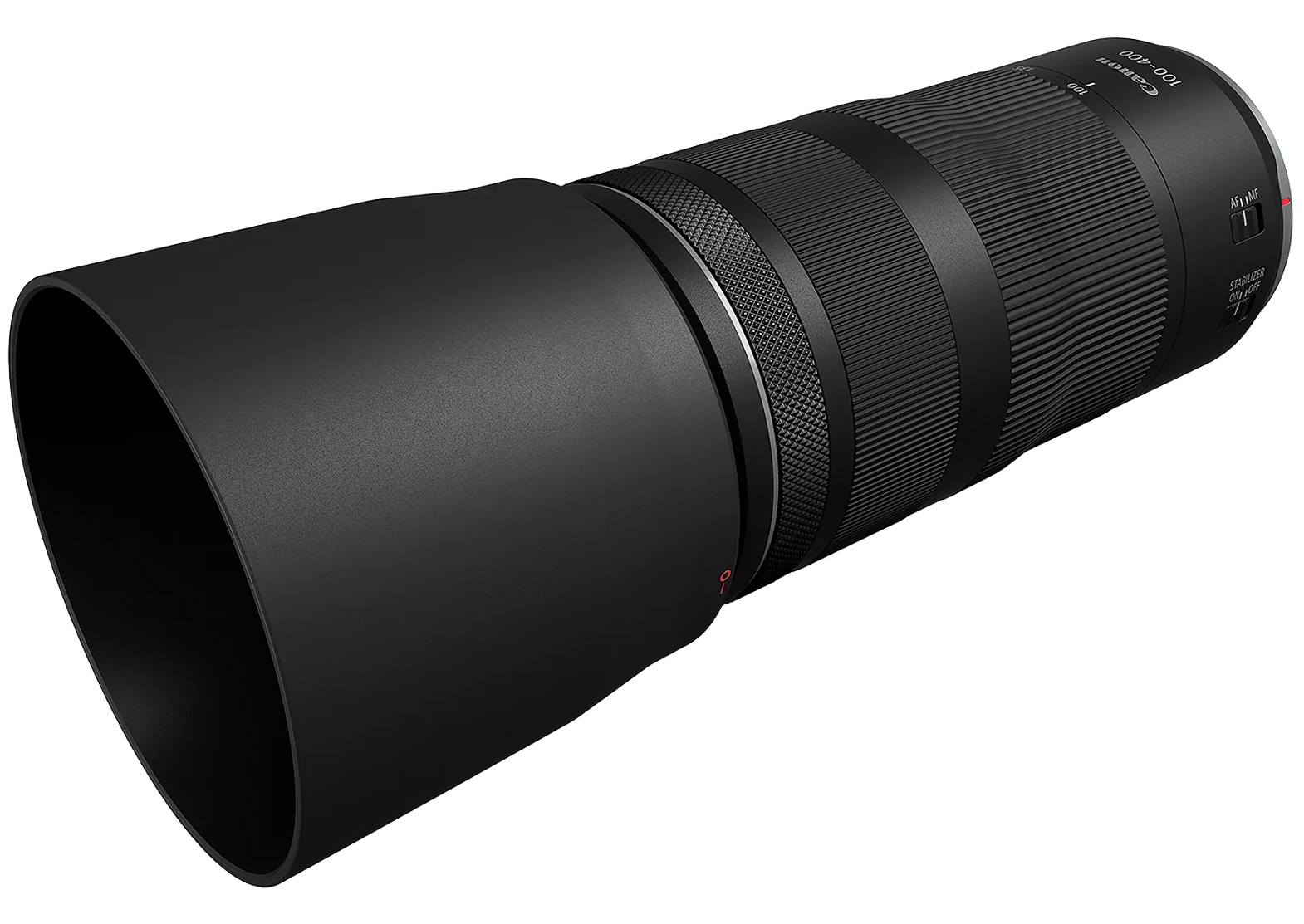
Extenders
The RF 100-400 5.6-8.0 IS USM is compatible with the Canon RF 1.4X and RF 2X Extenders. Extender RF 1.4X yields a maximum aperture of F11 and increases focal length to 560mm at the long end of the zoom. Extender RF 2.0X gives a maximum aperture of F16 and 800mm at the long end.
For the rare person wishing to stow this lens in a Canon logo pouch, the LP1224 Lens Case is available as an optional purchase.
 Final Blurb Final Blurb
I was hesitant to buy the RF 100-400 5.6-8.0 IS USM, fearing F8 at the long end was too slow. However, for butterflies, birds and other small creatures I shoot in tropical sunlight, F8 is doable, especially with the impressive high ISO of recent R system cameras. For most landscapes and sunsets, there's also plenty of light for F8 and I often end up using ISO 100 to 400. Obviously, not a lens for dim interiors, twilight forest scenes or nightscapes.
Most surprisingly to me was the excellent sharpness and contrast, nipping at the coattails of my EF 70-300 4-5.6L IS USM. Plus, the RF 100-400 5.6-8.0 IS USM focuses closer than most L series telezooms and serves well as a quasi-macro lens for small critters, insects and plants.
I mainly shoot macro and distant landscapes, and having a lens good at both these things has been a dream come true. Indeed, I've been dancing around the 70-300 zoom range for decades and the RF 100-400 5.6-8.0 IS USM has proved to be the most versatile, fast focusing and easy to carry telezoom I've owned.
Finally, help support this website by purchasing this lens at Amazon.
 
Harvest Moon | EOS R6 MK II and RF 100-400 5.6-8.0 IS USM
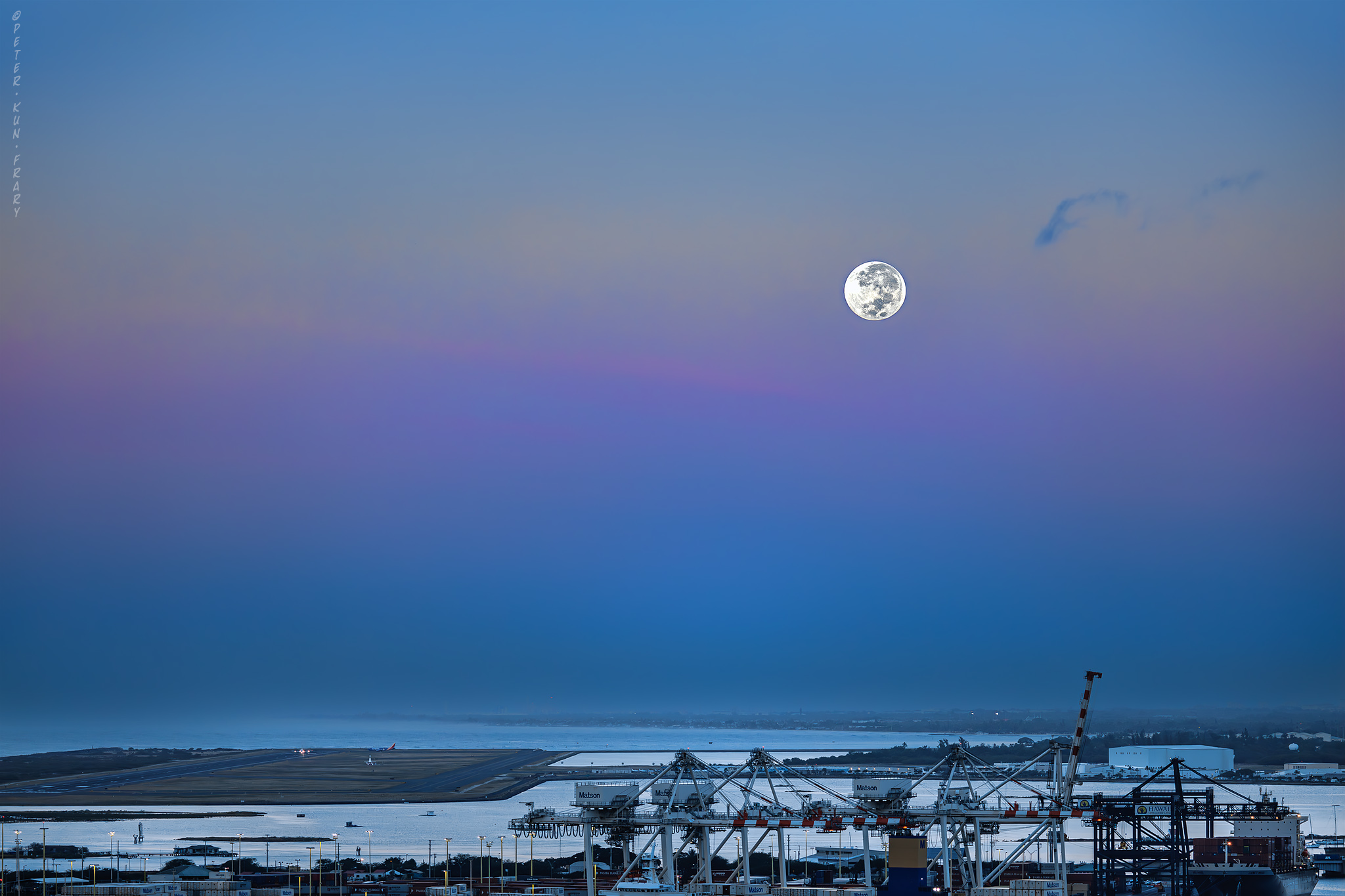
 Specifications Specifications
Focal Length and Maximum Aperture | 100-400mm | F/5.6-8.0
Lens Construction: 12 elements in 9 groups
Special Elements: 1 UD-glass element and 1 Aspherical element
Lens Coating | Canon Super Spectra Coating (SSC)
Diagonal Angle of View | 24° – 6°10"
Number of Aperture Blades | 9
Autofocus | Nano USM rear element focusing system with full-time manual
Closest Focusing Distance | 3.94 feet (1.2m) at 100mm | 3.44 feet (1.05m) at 400mm
Maximum Magnification | 0.41x, at 400mm (0.09x at 100mm)
Optical Image Stabilization | 5.5 stops IS correction at 400mm (6 stops with IBIS)
Filter Size | 67mm
Diameter x Length: 6.48 in. x 3.13 in. (164.7 x 79.5mm)
Weight: 1.4 LB | 635g
Optional Accessories | ET-74B Lens Hood
MAP: $649.99
 Source Materials Source Materials
Canon
RF 100-400 5.6-8.0 IS USM Instructions. Canon INC, 2021. (CT1-D200-A 2106SZ).
Sample Images
11/05/2023

©Copyright 2023-25 by Peter Kun Frary | All Rights Reserved
|

Video Stabilization
 Accessories
Accessories
 Final Blurb
Final Blurb Specifications
SpecificationsSource Materials



















 Compatibility
Compatibility









